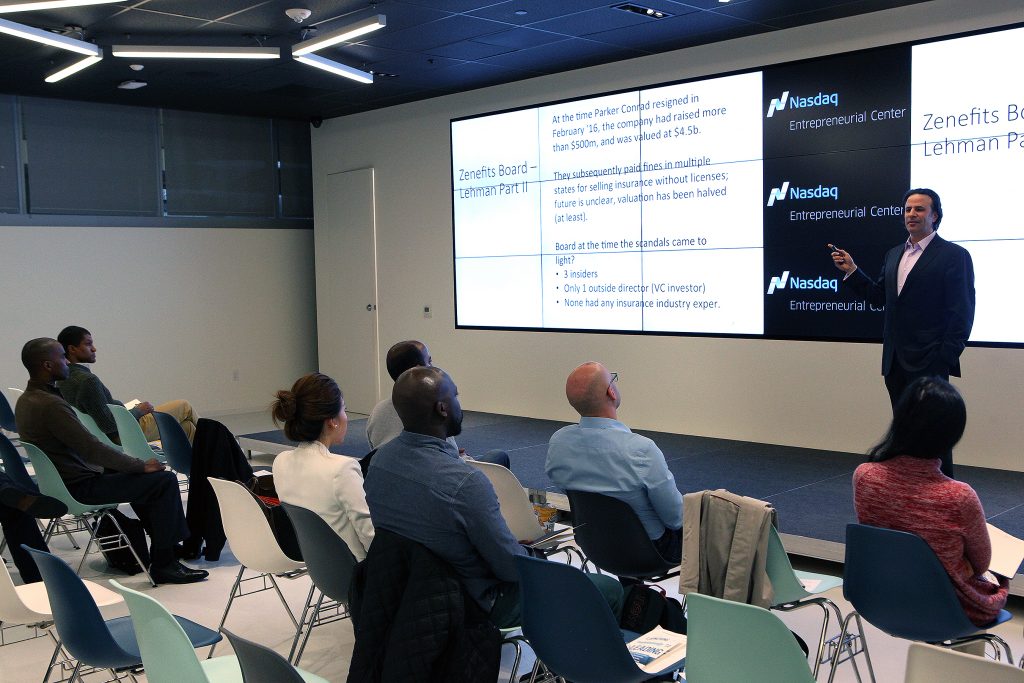Well-credentialed candidates who are in search of their first board seat routinely approach me and I repeatedly hear the following refrain: “I’ve been trying unsuccessfully to get a board seat for years. None of the advice I’ve received has been helpful.” As someone who is in boardrooms on a weekly basis, I don’t think that this austere success quotient is very surprising. Personally, I would attribute most failures to these three reasons.
You’re getting unrealistic advice. There are approximately 15,000 publicly traded companies in the United States, which means that more than 90 percent of public companies are outside of the Fortune 1000. Math alone dictates that a board candidate has a low chance of garnering a mid- or large-cap board seat. Put differently, in 2017 and beyond, unless you’re a well-known current or former CEO (or an otherwise prominent person), your chances of securing a spot on a Fortune 1000 company board for your first governance experience are slim.
Consequently, taking board search advice from mid- and large-cap executives or service providers that predominantly cater to those companies is of limited value. The small-cap ecosystem, where the majority of first-time candidates will serve, is notoriously idiosyncratic; you either understand how to navigate it, or you don’t.

Your networking is counterproductive. Telling everyone in your network you’d like to be on a board is an incomplete—and poor—statement of intention. In the past 7 years, more than 200 board candidates have contacted me. I’ve not gone out of my way to help anyone who’s stated: “I would love to find a board seat.” When I hear that, the former institutional investor in me recoils. What I hear instead is, “Hi, I’d like to find a part-time job I perceive to be high paying. Within reason, any company will do, because I can’t be bothered to proactively narrow my search aperture.” The only people I’ve assisted are those who have spent considerable time and effort to identify specific companies they are keen to serve, and who can make a compelling case for their candidacy. Boards only need directors who are uniquely suited to drive shareholder value and who display a passion for undertaking their prospective roles.
Start with CEOs. While it’s true that independent nominating and governance committees in Fortune 1000 companies predominantly select those boards, outside of that continuum very little has changed. Any experienced institutional investor will tell you that CEOs still choose board members at most public companies. Since your board appointment is likely to originate with the CEO, once you select a company to target, you should try to make your case to the decision-maker sooner as opposed to later.
Board candidates also need to face reality about how much money they might actually make as public company directors. The majority of candidates who approach me get all of their information from the large-cap focused New York Times or Wall Street Journal, and believe that any smart person with some extra time on his or her hands can make $250,000 per year for each board seat. That is fiction.
If a tennis court represents the number of public company directors in the United States, the number of directors making more than $250,000 per year from board service (much less from a single board seat) is more or less equivalent to the size of a small dining room table. In fact, there are thousands of public company directors in the United States who barely make enough each year from their board stipends to buy a small dining room table.
Taking some time to right-size your board search expectations is worth the effort. After securing that first board seat, many friends and colleagues have emailed me to say that it’s the most challenging —and the most rewarding—job they have ever had.
A version of this article originally appeared in the July/August 2017 edition of Directorship magazine.
________________



